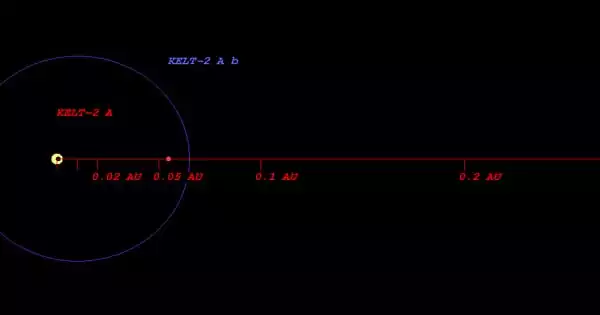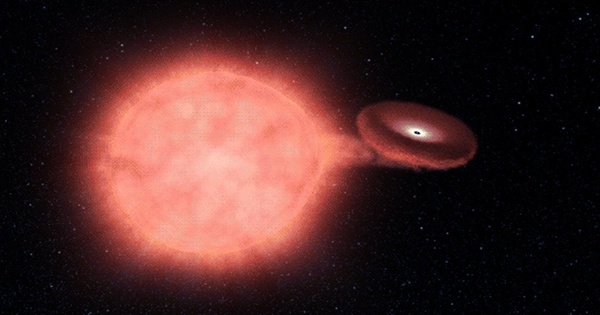KELT-2A is a yellow-white dwarf star located in the constellation Auriga around 440 light-years distant. This star has an apparent magnitude of 8.77, which means it cannot be seen with the naked eye but may be viewed with binoculars.
KELT-2A is the brightest star in the binary star system KELT-2, which has common-property motion (HD 42176). KELT-2B is a 295 AU distant early K dwarf that was identified at the same time as the planet KELT-2Ab.
KELT-2Ab is an extrasolar planet that orbits the star KELT-2A in the constellation Auriga around 440 light-years distant. It was detected using the transit method by the KELT-North survey, hence its mass and radius are determined exactly. KELT-2Ab is the fifth-brightest transiting Hot Jupiter with a well-constrained mass as of its discovery. As a result, the KELT-2A system is a viable candidate for future space- and ground-based follow-up investigations to learn more about the planet’s atmosphere. In 2018, water vapour was identified in the planetary atmosphere.
The star KELT-2A is a member of the binary star system KELT-2, which has common-property motion (HD 42176). KELT-2B is a 295 astronomical unit distant early K dwarf.

Young stars have long been known to exhibit a wide range of photometric variability, which has been attributed to a variety of physical processes. Classical T Tauri stars (CTTS) are distinguished by their complete discs and continuing accretion, which result in a plethora of intricate light-curve features. Deep dimming occurrences spanning days to months, in particular, have been linked to several types of occulting disc structures. Flaring events associated with accretion bursts are very prevalent, particularly in magnetically active, quickly rotating stars.
More evolved weak-line T Tauri stars (WTTS), which no longer have substantial discs or clear accretion traces, frequently have sinusoidal variability in their light curves, which is caused by patches on the stellar surface revolving with the star. These sinusoidal variations can be used to estimate stellar rotation periods, which lengthen over the first few hundred Myr of evolution as stars spin-down via magnetized stellar winds that remove angular momentum
















